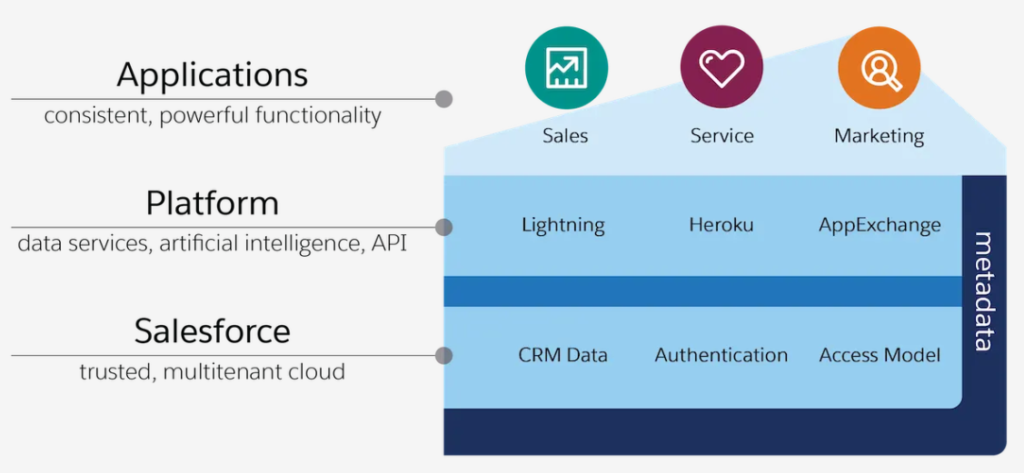Salesforce Architecture – Simple yet powerful
Salesforce is a world’s most trusted CRM application and a cloud platform which provides a highly customized experience for employees, partners and customers without even writing a single line of code. It all starts with Salesforce architecture. Let’s take a closer look to it:

As you can see in the image above, there are several layers sitting on top of each other. These layers can be classified as Applications, Core Platform and Salesforce Cloud and Metadata.
Applications
Applications are the top most layer which represent salesforce provided prebuilt applications or any custom built applications. your customers, partners or employees are going to interact with this layer.
Core Platform
Core platform is the middle layer. You can see this layer as a middleware layer which integrates Salesforce data with Salesforce applications. This layer consists of all the services and features salesforce platform provides like data services, Einstein AI, API, Lightning, Heroku and other capabilities. Application layer is built and completely dependent on Core platform services and features.
Salesforce cloud
Salesforce cloud is the third layer where all the data, access permissions, authentication and authorization details are stored. This layer is responsible in providing all the necessary data while enforcing salesforce data security model to core platform layer. It means applications will fetch data using core platform services but it will vary at application layer for each individual user using those applications.
Metadata
Metadata is the data for data. It means this layer defines what type of data to capture whether it is a text field or a number. Are there restrictions to data which needs to be enforced for data quality? How to represent data in salesforce via different pages or components? This layer stores all these details for ex: objects, fields, page layouts, flows, classes, pages, lightning components, security settings etc. In simple words, it stores all the configurations or customizations related to the organization which includes anything you have added, updated and anything provided by salesforce.

Leave a Reply